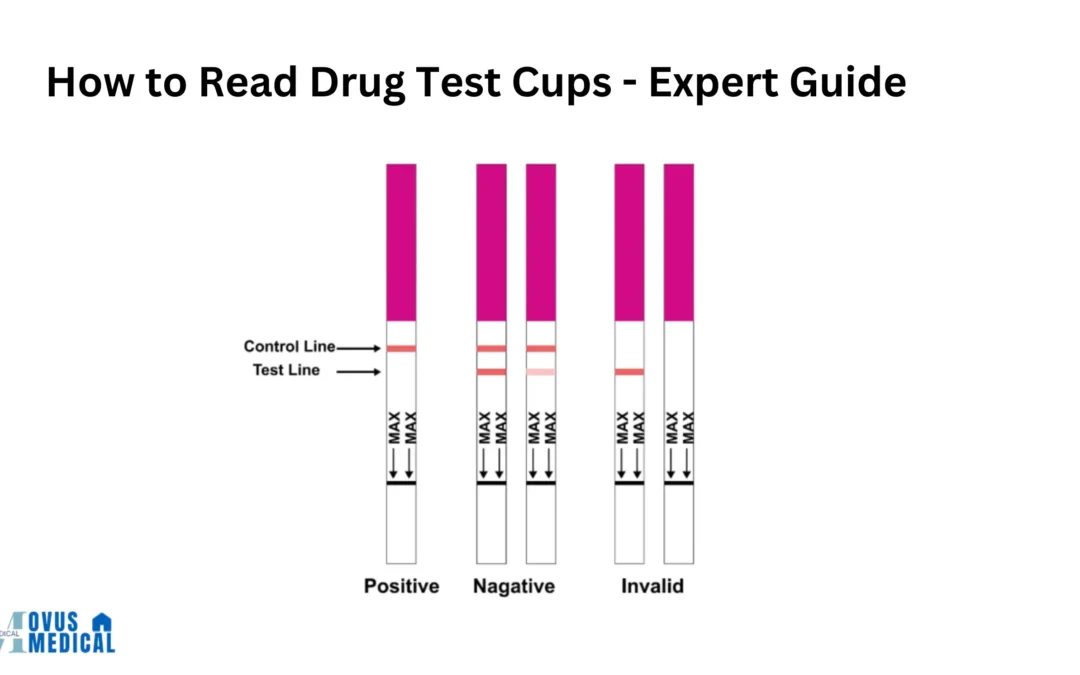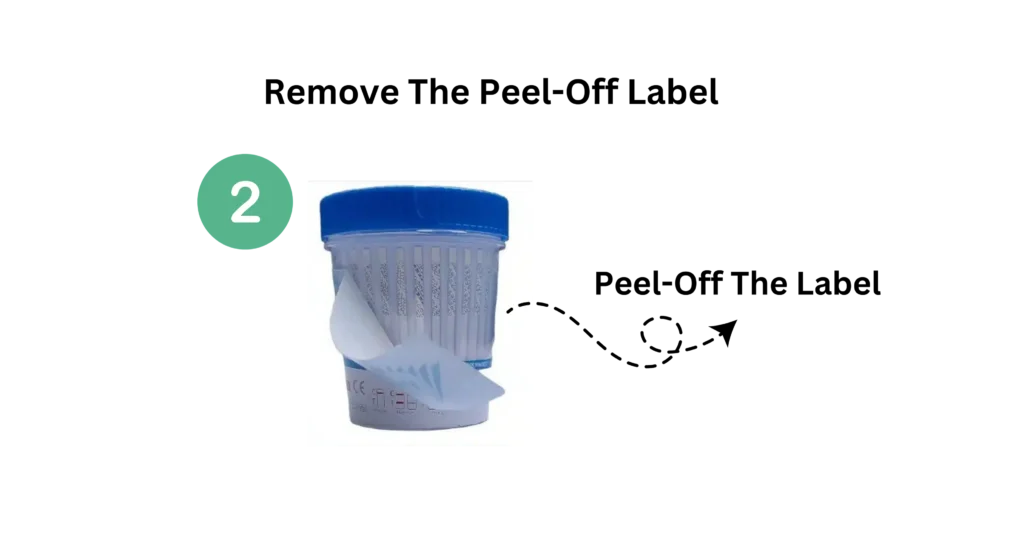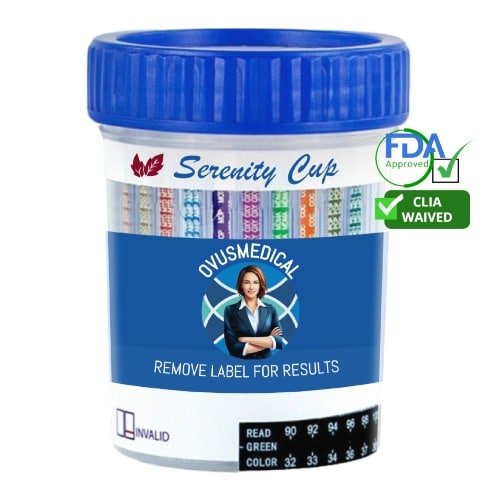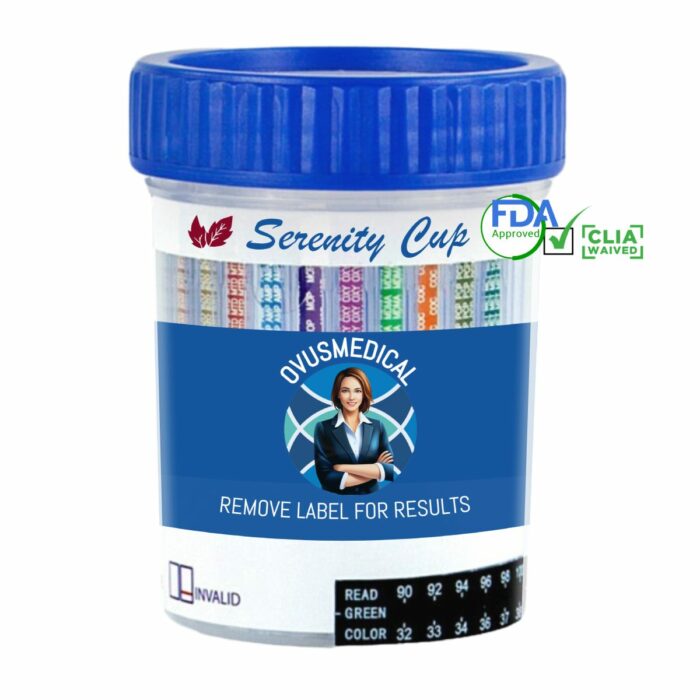In the 2018 Employment Screening Benchmark Report, about 63% of responding organizations reported conducting drug and alcohol testing as part of background checks. In most cases, companies conduct urine testing through drug testing cups, among others. Learn how to read drug test cup results efficiently by reading on.
Besides pre-employment screening, others use urine drug tests for compliance measures and home substance abuse prevention. For the safety, effectiveness, and security of the drug test, drug test cups are FDA-approved and CLIA waived.
Today, drug test cups can screen up to 14 types of drugs in a single test. The test procedure is identical for all cups, which involves following the proper steps to determine an accurate result. Below is a list of steps that can guide you.
5 Easy Steps: How to Read Drug Test Cup Results
Reading a drug test cup result is a simple test method to carry out. Though there are different urine drug test kits present in the market, the test procedure is identical. Below are the five easy steps to determine whether drugs of abuse are present in a specimen collection:
1. Unscrew the cup and collect the specimen
To begin the testing process, the donor must urinate into the drug testing cup to the right volume. An indicator line is present on the side of the cup to enable easy measurement of the sample quantity. At least 45 mL of urine sample is required in urine drug test cups. An insufficient sample may result in inaccurate results.
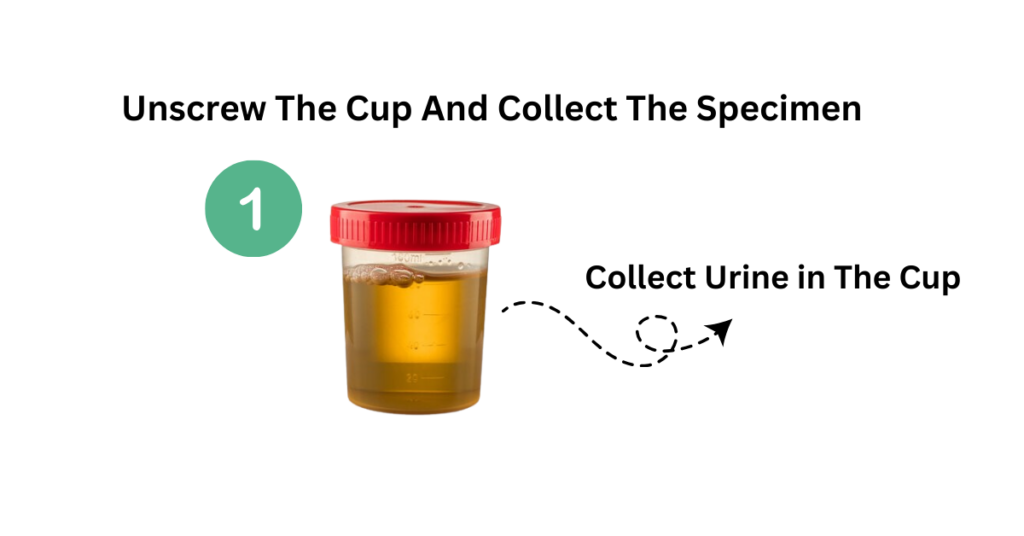
2. Remove the peel-off label, exposing the test results
After removing the peel-off label, you’ll see the test results as indicated by the color bands. In both regions, the presence or absence of color bands will tell whether the drug of abuse is present. Moreover, every panel urine drug test cup has two regions: the control region (C) and the test region (T). The control region at the top indicates whether the test is functional, and a test region indicates if the drug under test is present.
Take note to read drug test results within 8 minutes after the point of collection.
3. Check the temperature strip label
In checking the temperature strip label, it’s necessary to carry out the process within 4-5 minutes after a fresh urine sample collection. The acceptable temperature range for a urine sample is 32-38 degrees C (90-100 degrees F).
The green color will appear to indicate that the temperature of the urine specimen is within the acceptable temperature range. If the sticker glows green and does not fade after 3 seconds, it is considered a fresh, valid urine sample. Otherwise, adulteration of foreign substances may be present in urine samples, which will interfere with the drug test and cause false positives or false negative.
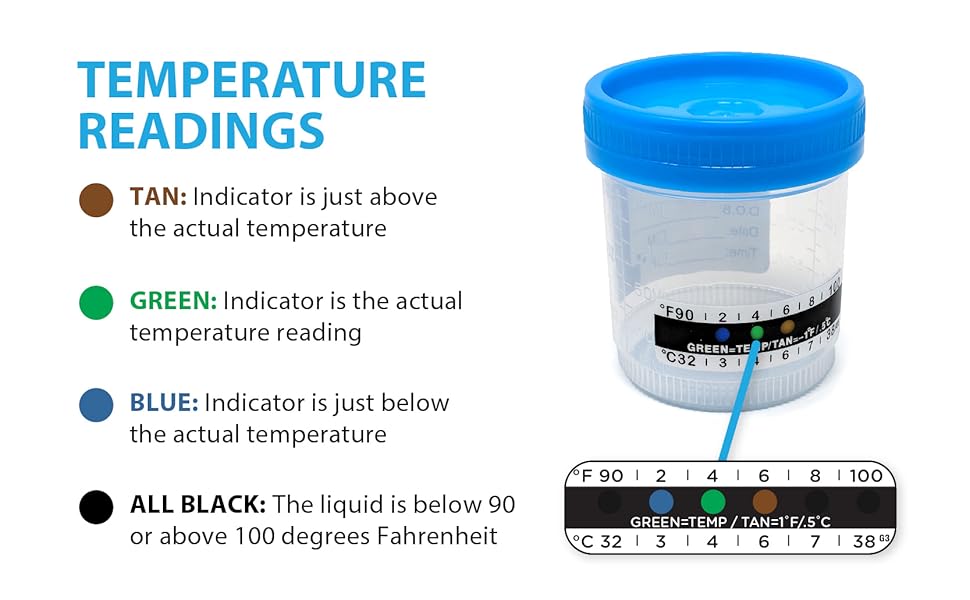
4. Be sure to read the results after 5 minutes
The presence or absence of colored bands in the result area of the test strips reveals whether a substance abuse test is positive or negative.
You must read the result after 5 minutes. Don’t interpret it after 8 minutes, as the test is invalid.
5. Identify colored lines in two regions
The presence or absence of colored lines in two regions associated with substance abuse determines a drug test result. Here’s how to read a drug test cup results through the use of colored band formation:

Positive results
In a presumptive positive at-home drug test, only one colored line appears in the control region. No colored band appears in the test region for the drug in question. More so, a positive result indicates that the drug concentration exceeds the cutoff levels.
Take note that another drug testing method must confirm a positive test result. Send your cup and specimen unaltered to a toxicology laboratory or SAMHSA-certified laboratory site for confirmation.
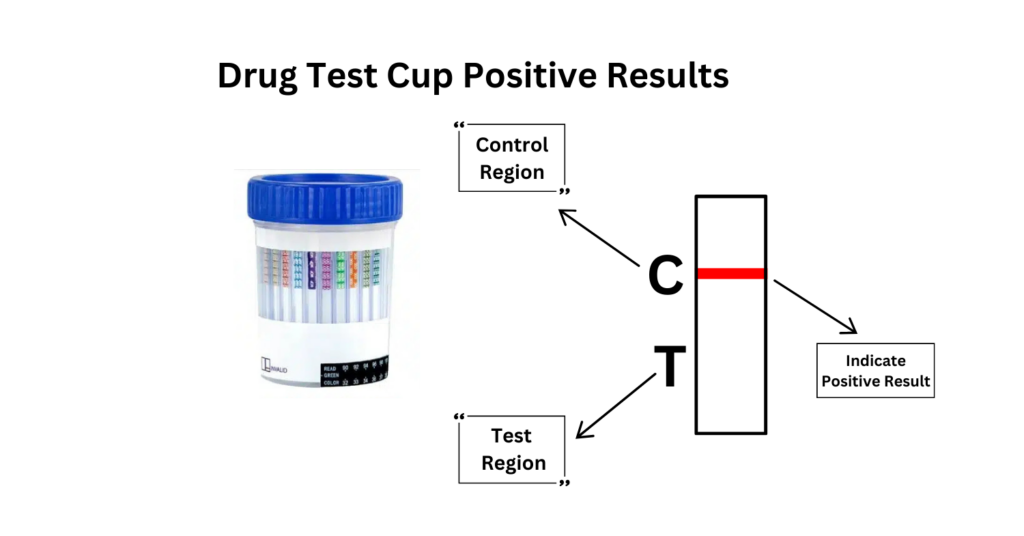
Negative results
In negative drug test results, two colored bands will show up. One band appears in the control region, and another appears in the test region for the drug in question. Moreover, a negative drug screen result indicates that the drug concentration is below the detection levels.
Note that the intensity of the color line doesn’t matter. Even very faint lines say drug test results are negative.
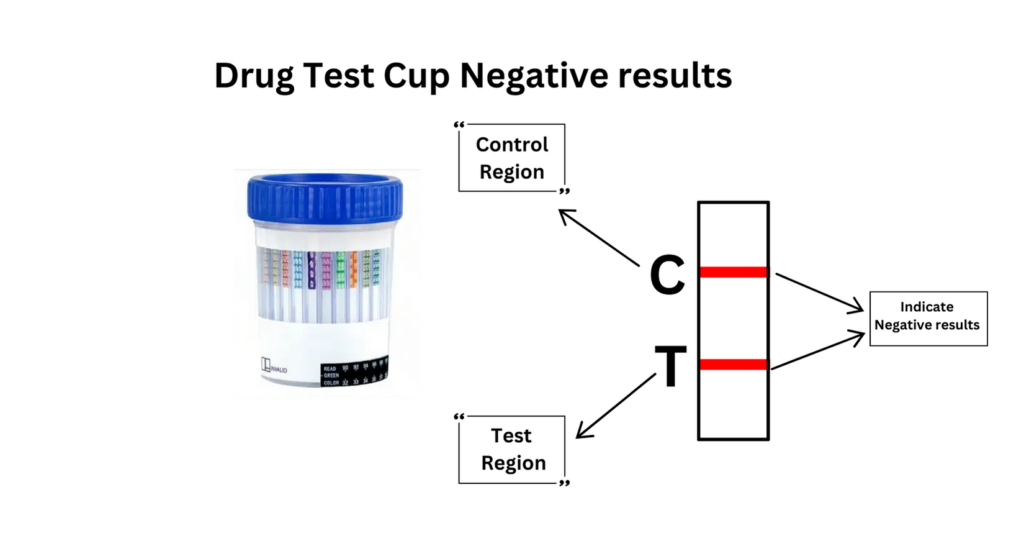
Invalid results
In an invalid result, the control line fails to show up at all in the control region. Thus, the result is unfunctional and recommended to discard.
Review the procedure again and repeat it with a new test.
In recent years, panel drug testing cups have become a popular drug screening method with most industries due to their convenience and faster drug detection times. Even though the drug test is easy to administer, there are specific steps to consider on how to read drug test cups correctly to prevent inaccurate results.
Looking for affordable and high-quality drug testing kits or drug testing supplies? Check out Ovus Medical’s drug testing cups today!
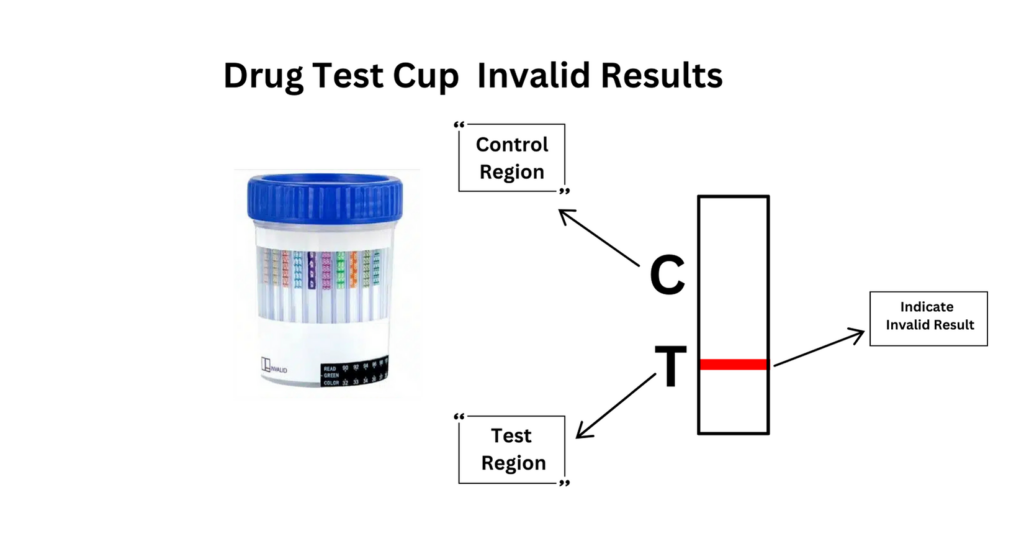
Drug test color codes for temperature
Drug test color codes for temperature are a crucial aspect of ensuring the accuracy and validity of urine samples. How to read a drug screen? Urine drug tests include a temperature strip that changes color to say if the sample is within the acceptable temperature range, usually between 90°F and 100°F (32°C – 38°C).
If the temperature is too high or too low, it may suggest that the sample was tampered with or is not fresh. The color code, with a 0.5% density change, provides a visual indicator for the tester to confirm that the urine sample has not been adulterated. The density shift is small yet significant, helping to prevent fraudulent practices during testing.
Thermometer Reading Instructions
Many urine drug test cups come supplied with a standard thermometer strip that uses color codes to measure the temperature of the urine sample. This type of product may come in various models and forms, but most obey this standard set of rules:
- How do you read a home drug test? When the urine sample is in the cup, wait for the green indicator that shows the specimen’s temperature.
- If the color you see is blue, increase the temperature by 1 degree Fahrenheit or 0.5 degree Celsius from the point where the indicator glows. When you notice a tan or brown color, lower the temperature mark by 1 degree Fahrenheit or 0.5 degrees Celsius.
- The most effective method for ensuring that you are using the product properly is to refer to the instruction manual included in the kit. Proper use and decoding of the results are vital for getting exact and clear results.
- To be on the safe side, ensure that the cup does not come into direct contact with sunlight or temperatures higher than 55 degrees Celsius.
- The normal temperature of human urine, as noted earlier, is between 94°F and 96°F (approximately 35°C). To get the most precise results, the temperature of a drug test sample should be taken within the first 4 minutes after its receipt, as the sample’s temperature can vary with changes in the surrounding environment.
- The temperature range from 90°F to 100°F (32°C – 38°C) is considered acceptable. Samples with temperatures beyond this range should be taken as suspicious and checked for any signs of adulteration.
How Can Sample Adulteration Be Prevented
To avoid sample adulteration, it is crucial to keep the collection process under strict control. Keeping strict control of the collection process can guard against infection and stop people from cheating on their drug tests. Other methods to omit the use of tampered urine samples:
- Request that donors store their items in a secure box located outside of the testing area. This stops donors from bringing bags or items with urine that is not theirs or liquids to dilute the contaminated urine.
- Random drug testing could be the most accurate method for identifying substance abuse. Replace planned press releases if they align with your workplace’s drug testing policy. Random read drug test offers a short time for donors who are drug users to cleanse their systems of drugs. Some substances remain in the body for longer durations, while others are quickly eliminated; the latter may be more easily spotted through random drug testing.
- Manage the times for checking in at the collection site. A lengthy wait in the bathroom could mean that a donor is trying to beat the drug test.
- Examine the restroom for possible waste, such as soaps and cleaning powders.
- If possible, consider handing it over on-site. Collecting samples on-site in a highly managed setting limits the donor’s options for using various elements or urine that do not belong to them to change the results of the drug test.
How Are Drug Tests Conducted?
How do you read a drug test? A drug test can be carried out in various ways. Some states, however, may restrict the use of certain testing methods for employment purposes.
The following are the different testing methods that you may use.
1. Urine Drug Tests
Employers most frequently request urine drug tests as the standard drug screening method.
The drug urine test results are explained as the applicant or employee gives a urine sample in a cup included with the drug testing kit.
Once the sample has been collected, it will undergo drug testing.
A confirmation test will be conducted to verify any initial positive result.
An iCup urine test is a drug panel that comes pre-packaged in a cup. To ensure that the urine sample is at the correct temperature, the iCup comes with a temperature strip. Some also come with adulteration strips to verify if the sample has been altered.
How to read a urine drug test? An applicant or employee may not have been impaired at the time of the test, even if they received a positive result. A drug screen that returns a positive result shows that the substance was found during its detection window.
Urine screening indicates only whether the substances being tested for are detected, not their levels.
2. Blood Tests
Employers may use blood tests to check employees or job candidates for alcohol or drug use in certain situations. A licensed phlebotomist will collect a blood sample from the applicant or employee as part of a drug test. The sample will be sent to the laboratory for testing and analysis.
Blood samples are analyzed in the institute using gas chromatography/mass spectrometry (GC/MS). Through blood tests, the presence of drugs in an individual’s system and their levels at the time of testing can be determined.
Since blood tests are invasive, they are not commonly applied by employers.
3. Breathalyzer Tests
Breathalyzer tests identify alcohol on an individual’s breath. They do not identify the presence of other substances.
Transportation companies may use a breathalyzer, or an employer might use one when suspecting that an employee is on the job under the influence.
To conduct a breathalyzer test, an employee must exhale into a tube that is linked to the breathalyzer. It gives instant drug test results and will say the individual’s blood alcohol concentration (BAC) at the time of testing.
4. Hair Sample Tests
Hair follicle drug tests can detect substances over a long period. Your hair will incorporate any drugs you have taken as it grows. Thus, hair follicle drug tests can identify substances consumed by a person up to 90 days before the test.
To conduct a hair follicle test, lab technicians took a sample of 100 strands of the employee’s hair.
How to read at-home drug test results? Drugs that an individual has eaten will not be detectable in a hair follicle drug test for up to seven days. Thus, following a workplace accident, a hair test will not effectively identify recent drug use. Alcohol intake cannot be detected through hair tests, either.
5. Saliva Drug Tests
Saliva tests are capable of detecting minute quantities of alcohol and drugs. A swab is used to collect a saliva sample from the inside of an applicant’s or employee’s cheek, and this is how they are carried out.
Because they can watch the employee or candidate while the test is being conducted, certain employers favor saliva tests. This compels any attempt by the test subject to change the sample and results.
On-site saliva tests can identify trace amounts of drugs or alcohol consumed in the last few hours or days.
An Employee or Candidate Failed a Drug Test – What Now?
When you get a positive drug test result for an employee or applicant, it’s important to adhere to state and federal laws in your response.
According to the Fair Credit Reporting Act (FCRA), you should follow these steps when making drug tests:

1. Inform Applicants and Employees in Writing
It is required to provide your applicants or employees with written notice if you plan to conduct employment background checks and drug screens.
Make sure to provide this notice on a unique document.
2. Obtain Signed Consent
Before performing a background check or drug screen, you must get signed consent from your applicant or employee.
A written consent is needed before you conduct a background check and drug test.
3. Provide an Opportunity to Review Results and Fix Errors
Your employees and applicants are able to examine the outcomes of their drug tests and background checks. Additionally, they can refine any mistakes they discover.
4. Send a Pre-Adverse Action Notice
If you choose not to use an applicant due to details found in a background check report, it is required to send the applicant a pre-adverse action notice and allow him or her time to provide easing information or settle errors.
5. Send a Final Adverse Action Notice
Upon finishing the adverse action process, you are required to send a final adverse action notice to the candidate, informing them that your decision not to hire them was based on information from their drug test or background check report.
Include the name and address of the consumer reporting agency that supplied the report, along with a statement indicating that the agency did not make the adverse employment decision.
6. Have a Drug Testing Policy and Follow It
It is necessary to have a written policy on drug testing in your company and to adhere to its instructions.
States vary in their laws about drug testing results and the correct handling of these results. In certain states, such as Texas and Oklahoma, employers may use positive test results as grounds for stopping or denying employment.
Other states provide employees with a few days to explain or contest positive drug test results.
Conclusion:
Reading drug test cup results is a straightforward process, but it requires attention to detail to ensure accuracy. Following the proper steps—such as collecting the urine sample, t-cup drug test and how to read results, checking the temperature, and interpreting the color bands—can help determine whether a drug test is positive, negative, or invalid.
Understanding the results, especially about the presence or absence of colored lines in the control and test regions, ensures that the test is reliable. Additionally, the temperature strip helps confirm whether the sample is fresh and untampered. Accurate reading of drug test cups prevents false results and ensures effective drug screening.
FAQ
How do I contact Ovus Medical?
You can call us at 1-800-921-8241 or email BH@OvusMedical.com or JS@OvusMedical.com. Our mailing address is 801 N Congress Ave., Boynton Beach, FL 33426.
Do you offer bulk order pricing?
Yes. For wholesale or bulk pricing, please contact us at 1-800-921-8241 or BH@OvusMedical.com for details.
Do you provide free sample cups?
Yes, we offer two free sample cups to prospective business buyers. This offer is not available to existing customers or non-businesses. Business addresses are verified. Please include your business name, website, and preferred panel type in your request.
What are your customer support hours?
Our customer support team is available Monday to Friday, from 8:00 AM to 5:00 PM Eastern Time.
Where can I find your policies?
You can review our Privacy Statement, Shipping Policy, and Return Policy directly on our website.
How quickly do you respond?
We aim to provide real-time, fast responses during business hours for all inquiries about orders, bulk pricing, and product support.
You may also like…
-
12 Panel Drug Test Cup With PCP
As Low As $1.99
FDA/Clia Waived
$3.09 Info & Price This product has multiple variants. The options may be chosen on the product page -
12 Panel Drug Test Cup TCA
As Low As $2.29
FDA/Clia Waived
$3.09 Info & Price This product has multiple variants. The options may be chosen on the product page
